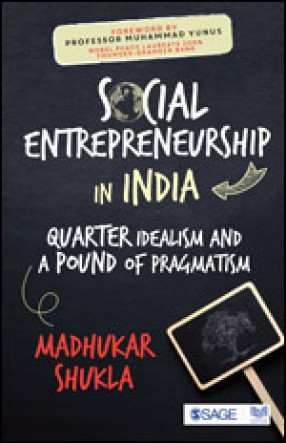Social Entrepreneurship in India: Quarter Idealism and a Pound of Pragmatism
While the phrase ‘Social Entrepreneurship’ sounds oxymoronic, it certainly is not an unfamiliar concept in the Indian market and society. India is a hub of social entrepreneurship and has a long history of doing business for social causes. The business giants like Amul, Aravind Eyecare, Lijjat, Sulabh Shauchalay, etc. have been solving social problems through entrepreneurial strategies since ages. Inspired by tech giants like Uber or Paytm, aspiring entrepreneurs are looking for problems that can be solved through new business ideas. The emergence of social entrepreneurship as an identifiable sector and as a discipline/field of study has become a social phenomenon. The book starts with tracing the historical roots and the milestone which have led to the recent emergence of social entrepreneurship as a recognized sector of practice and study. Rather than fitting ‘social entrepreneurs’ in a box, it identifies the qualities and patterns of successful social entrepreneurs, both as a person and how they function. Sifting through these diverse approaches to solve social problems, it proposes five broad but distinct types of Indian social entrepreneurs. It describes how social entrepreneurs, like any other entrepreneur, identify opportunities and gaps in the ‘market’, develop innovative solutions to address those problems, and use entrepreneurial strategies to build and scale their ventures.It also discuss the key problems of access to basic social goods (e.g., education, healthcare, credit, etc.) by the poor segment of Indian society, the challenges in servicing this segment and successful entrepreneurial models which social entrepreneurs use to impact their lives. As scaling the impact is an essential requirement for the social entrepreneurs to make a difference in the society and lives of people, the book also discusses three different ways in which social entrepreneurs scale, and the prerequisites and challenges in scaling.
Get it now and save 10%
BECOME A MEMBER








Bibliographic information